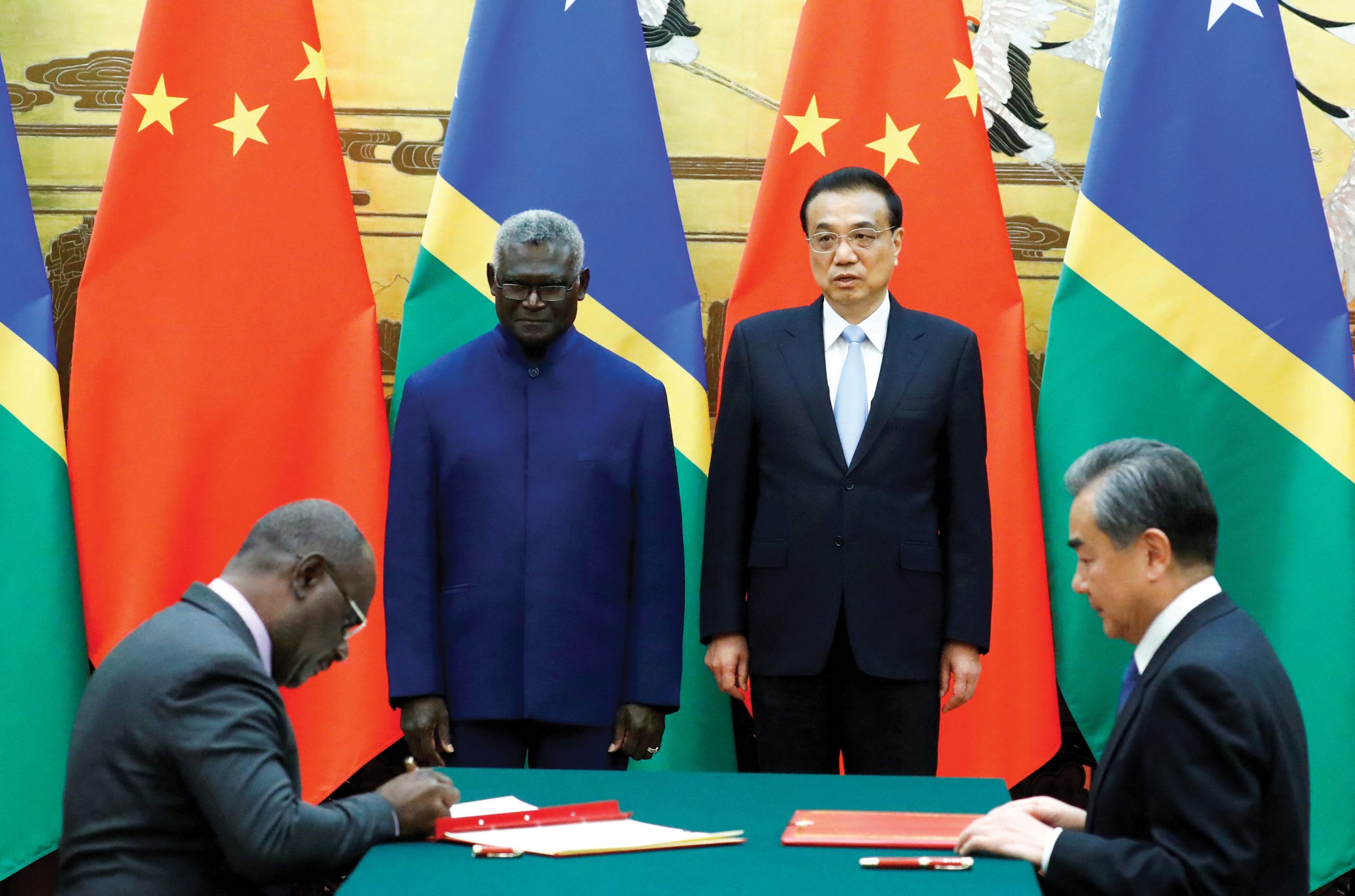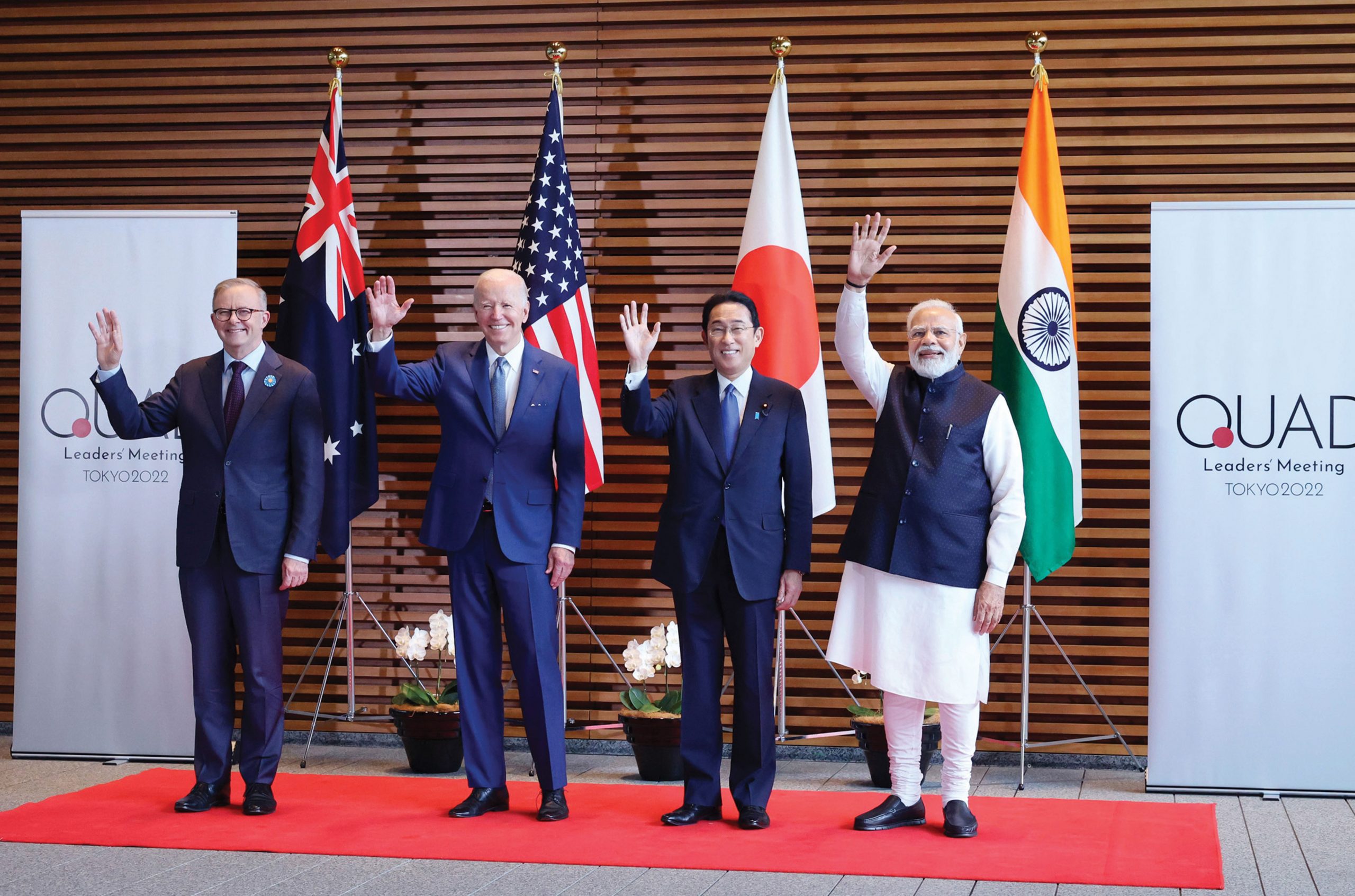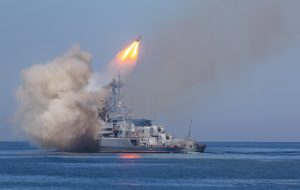China made several security agreements with the Solomon Islands, including a security pact, giving China the authority to deploy security forces to quell unrest, protect Chinese investment, and possibly build a port for commercial and military use.

This move has drawn intense condemnation from Washington and Australia, which made extensive efforts to prevent the Solomon Islands from concluding the agreement, but these efforts ultimately failed.
However, The US did not stop there, as the US Secretary of State Anthony Blinken warned that Beijing is considered “the most serious long-term threat to the international order.”
The minister explained that “China is the only country that has the intention to reshape the international order and it is increasingly accumulating the economic, diplomatic, military and technological power to do so,” meaning that the conflict between Washington and Beijing has become a part of “the great power struggles”, which will greatly affect the coming years, if not decades.
Partial victory
Although Beijing managed to make the security and economic deal with the Solomon Islands, it failed to duplicate that success with 10 other islands located in the South Pacific, which were as follows:
1 The Solomon Islands Agreement: According to Australian and American accusations, the agreement with the Solomon Islands allows Beijing to establish military bases in the Pacific Ocean, limiting the freedom of movement of Australian and American ships, both commercial and military.
The agreement was concluded despite the Australian and American attempt to put pressure as well as clear threats on the Solomon Islands to dissuade it from signing the agreement, which included the warning of US State Department spokesman, Ned Price when he said: “We believe that the signing of such an agreement could further destabilize the Solomon Islands and set a concerning precedent for the wider Pacific region.”
2 Other islands’ rejection: in a major diplomatic setback for Beijing, on May 30, 2022, during talks held in Fiji between Chinese Foreign Minister Wangyi and the leaders of ten island countries, the island countries rejected Beijing’s efforts to conclude a broad security agreement with them.
The planned agreement included Chinese training for local police and cybersecurity cooperation, in addition to conducting sensitive marine surveys and accessing natural resources, both onshore and offshore. In return Beijing provides millions of dollars in financial aid and allows for the possible establishment of a free trade agreement between China and the Pacific island countries, giving them access to the vast Chinese market.
Despite its failure to conclude the agreement, Beijing was able to continue bilateral cooperation in 15 fields, including Belt and Road cooperation, climate change, and response to the COVID-19 pandemic.

Strategic connotations
The agreement between China and the Solomon Islands reveals several connotations, which can be detailed as follows:
1 Change in China’s strategic behavior: China is no longer adopting defensive positions and avoiding conflicts but shifting its focus to more assertive policies, both at the level of rhetoric and practical policies, which became clear in various situations.
On the level of political rhetoric, Chinese Defense Minister Wei Fengyi warned his US counterpart, Lloyd Austin, at the first face-to-face meeting between the two ministers on the sidelines of the Shangri-La Dialogue security summit in Singapore on June 10, that Beijing “will not hesitate to start a war” if Taiwan declares independence, he also pledged that Beijing “will crush any scheme for Taiwan’s Independence to pieces.”
In late June 2022, Chinese Foreign Minister Wang Yi stressed that the US strategy for the Indo-Pacific region is “doomed to fail”, commenting on US President Joe Biden’s visit to South Asia to increase engagement with allies there to counter the rise of Chinese influence.
On the level of practical policies, in April 2022, China unveiled a new hypersonic anti-ship missile “YJ-21”, which has a speed of Mach 10 and can be launched from warships, or the air, which Beijing developed to have the ability to threaten aircraft carriers and other American ships and drive them away from the Chinese coast and neutralize their effectiveness if China decides to annex Taiwan by military force, especially since the United States does not have any current defense systems capable of intercepting or even monitoring this type of missile.
Chinese fighters also began repeatedly penetrating the Taiwanese “identification zone for air defense purposes” (Adiz), in a warning to Washington against continuing to supply the Taiwanese military with weapons.
2 The repercussions of the Ukrainian war: Beijing has its own special view of the Ukrainian war, as it believes that Washington’s insistence on military expansion in the immediate vicinity of Moscow is responsible for the outbreak of the Russian-Ukrainian war and that this war could have been avoided if the West agreed to Moscow’s “reasonable” security demands, which included keeping Ukraine out of NATO, however, Washington’s insistence on initiating “great power struggles” and besieging Moscow, that in addition to Washington’s attempts to reproduce the same policies to curb the Chinese rise in Southeast Asia, is what made Beijing realize that the only way to respond to US policies is adopting opposite policies, which means, building military alliances that undermine those that Washington seeks to weave near China. Perhaps what prompted China to do so was the American warnings against the repeat of Ukraine’s experience in Taiwan. Washington rushed into a comparison between the two cases, in the early days of the Ukrainian war, to warn Beijing of the dire repercussions that it will suffer in the event of forceful annexation of Taiwan. Washington believed that Western military support for Ukraine, along with Western sanctions against Russia, would be sufficient to strategically defeat Russia, which would deter China. However, as the battles continued, Russia was able to tighten its control over large areas of the Donbas, expand militarily in the Kharkiv, Kherson, and Zaporizhzhia regions, assert its control over about 20% of the Ukrainian territories, and in addition to the emergence of indications of the collapse of the Ukrainian army, despite the US and European military support, thwarted the American belief.
These developments prompted Beijing to realize the predicament Washington placed itself in, especially since it seemed clear that the Ukrainian army was completely incapable of stopping the progress of the Russian army, and according to Richard Haass, president of the American Council on American Relations, as well as most European intelligence services, it seemed unlikely to succeed in expelling the Russian army from the lands it occupied, which is Washington’s main goal.
On the other hand, China began exploiting these developments by adopting direct policies to respond to the economic and military alliances that Washington seeks to build against it.
The first of these steps was the security agreement with the Solomon Islands, as the archipelago is in the middle of the trade route between Washington and Canberra, and it also enables China to monitor the movements of the American and Australian navy, and in a worst-case scenario enables the Chinese army to close the sea lane between Australia and the United States, which represents a message to Washington that China will not stand idly by in the face of American attempts to encircle it militarily.
3 Getting rid of the American encirclement: Washington worked to encircle China through the principle of the “first and second island chain”, a strategy formulated by Washington in the late forties of the twentieth century, through which it aimed to try to contain the Chinese rise by establishing alliances with the island states surrounding it.
The first island chain is the Kuril Islands, the main Japanese archipelago, Okinawa, as well as the northern part of the Philippine archipelago, the Malay Peninsula, and Taiwan, while the second chain consists of the islands of Japan extending to Guam and the Micronesian islands.
China has managed to establish a strong presence through gray area operations in the first island chain, however, it still has to establish a permanent presence in Taiwan to fully control the first island chain.
The Solomon Islands provide a special location from which Beijing can exercise control over the ocean and air space, which could threaten the longitudinal and linear lines of communication between the United States and its allies in the Pacific Ocean, including Australia.
A Chinese naval base in the Solomon Islands could also be used to intercept Taiwan’s military reinforcements.
Even an isolated People’s Liberation Army (PLA) facility in the Solomon Islands used to gather intelligence or to deploy military patrols there would complicate defense planning for Australia and the United States.
Beijing is already a dominant economic player and provider of aid and infrastructure across Oceania, in the South Pacific, and since 2015, Chinese private companies and state-owned companies have been active in acquiring and developing ports and airports, attempts that the West sees as an excuse to secure a foothold for the PLA, especially since the Chinese Navy is expanding its reach in the Coral Sea at a higher rate, on the eastern coasts of Australia, which is what makes it important for Chinese ships to stop at Solomon Islands ports for logistics purposes. This would effectively eliminate the Australian and Western hegemony in the South Pacific, and represent a strong Chinese response to Washington’s attempts to encircle it through the Ocos Alliance, which is a defense agreement based on providing American nuclear submarines to Australia, to enhance its ability to monitor Chinese fleets in the Pacific and Indian Oceans.

4 Decline in American economic influence: China has managed to surpass the American influence in the South Pacific, as it is expanding in this region, by establishing strong economic relations with the islands in the region. China seeks to link the vast region together through agreements giving it access to their lands, seas, and digital infrastructure, in exchange for development grants, scholarships, and training.
The United States has begun to realize that the only way to confront China is by strengthening economic ties with Southeast Asian countries. Therefore, on May 22, 2022, US President Joe Biden announced from Tokyo, the launch of a new economic partnership in the Asia-Pacific region, comprising 13 countries, including The United States and Japan, excluding China, called the “Indo-Pacific Economic Framework”.
This agreement is a modified version of the “Trans-Pacific Partnership” agreement, which was adopted by former US President Barack Obama in 2016, and abandoned by former US President Donald Trump in 2017, which raises the question of whether Washington is serious about committing to it this time, especially since there are indications that the Republicans may beat the Democrats in the midterm elections later this year, opening up new possibilities for them to violate the agreement again.
On the other hand, the Indo-Pacific Economic Framework Agreement does not rise to the level of free trade and thus is weaker than the “Regional Comprehensive Economic Partnership” agreement, which is the free trade agreement that includes the 10 member states of the Association of Southeast Asian Nations, including China, Japan, South Korea, and Australia, meaning that the Chinese economic frameworks in Southeast Asia are more attractive than the American counterparts.
5 Supporting China’s military influence: China’s fishing fleets already dominate the seas between the nearly 30,000 islands in the South Pacific, fishing huge quantities of tuna, while sometimes sharing intelligence with Beijing about the US Navy’s movements, and if China could deploy forces to ports and airports and set up satellite communications sites, all of which are getting closer to reality in some Pacific island nations, it could intercept communications and close shipping lanes if it wanted to.
The agreement with the Solomon Islands will also give Beijing strategic assets two thousand kilometers from the Australian coast, threatening the military and commercial lines of communication between the United States and Australia, enabling Beijing to respond strongly to American military moves against it, meaning it will no longer be satisfied with adopting defensive positions.
In conclusion, the defense agreement between china and the Solomon Islands, reveals that the rules governing US-Chinese relations have witnessed a remarkable transformation and that Washington’s strategy to encircle its opponents, in the context of major power struggles, will face a major challenge, as China will not stand idly by, in the face of US attempts to encircle it, and will even move to adopt effective and active policies to respond to that, which are all indications of an escalation of tension between Washington and Beijing in the foreseeable future, and turning the South Pacific region into one of the confrontation points between the two sides.
« By: Dr. Shadi Abdel Wahab (military researcher and strategist)













